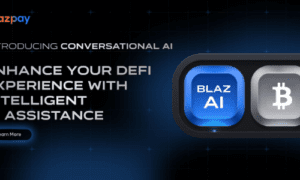As the financial industry grapples with growing complexity, regulatory pressures, and evolving risk landscapes, experts are calling for a new paradigm in risk management and compliance. At the forefront of this movement is Srinivasarao Paleti, a thought leader in banking, risk compliance, and AI-driven financial innovation. Through his research and leadership, Paleti is redefining how banks and financial institutions harness data engineering and artificial intelligence (AI) to navigate uncertainty and unlock opportunities.
In his latest research paper, Financial Innovation through AI and Data Engineering: Rethinking Risk and Compliance in the Banking Industry, published in the International Journal of Advanced Research in Computer and Communication Engineering, Paleti explores how intelligent technologies can augment traditional processes across banking functions like fraud detection, regulatory compliance, market risk assessment, and credit loss estimation. His work suggests that integrating AI and data engineering is not just an option—it is a necessity for future-ready financial institutions.
The Urgency of Innovation in Finance
For decades, the banking industry has relied on static frameworks, relying on historical models and formula-driven compliance structures. However, as financial systems become more interconnected and exposed to cyber risks, systemic shocks, and data breaches, these legacy systems often fall short. Paleti argues that traditional methods of risk estimation and fraud detection are ill-equipped to handle the velocity and volume of modern financial data.
In his research, he emphasizes that emerging AI techniques—like graph neural networks, anomaly detection algorithms, and predictive modeling—can empower banks to proactively monitor and mitigate extreme risk events. These technologies enable financial institutions to move beyond linear models and static thresholds, enabling them to anticipate threats in real time and adapt to ever-changing conditions.
A New Era of Risk Management
Paleti’s vision is rooted in a clear understanding of the limitations inherent in conventional risk frameworks. He identifies gaps in how risk data is aggregated, how models are validated, and how compliance frameworks are operationalized. His work underscores the need for AI systems that are explainable, trustworthy, and aligned with regulatory expectations—a balancing act that requires both technical sophistication and strategic foresight.
One of the critical challenges in modern finance is the integration of vast, often unstructured data sources into coherent, actionable intelligence. Paleti’s research advocates for a data engineering approach that builds robust pipelines for processing, storing, and analyzing data at scale. By doing so, banks can streamline regulatory reporting, strengthen fraud detection models, and implement dynamic credit risk assessments that reflect real-world complexities.
His paper highlights the importance of explainable AI (XAI) in ensuring transparency and accountability in automated systems. Financial institutions, he notes, must not only deploy AI models but also ensure that the decision-making processes behind them are interpretable by human stakeholders, especially in high-stakes areas like credit scoring and market risk analysis.
Beyond Compliance: Transforming Financial Systems
Paleti’s contributions extend far beyond academic theory. With over 13 years of experience at Tata Consultancy Services (TCS) in roles spanning telecom and banking, he has a practical understanding of how large-scale financial systems operate—and how they can evolve. His expertise in fraud detection, anti-money laundering (AML), adaptive AI models, and digital banking reflects a deep commitment to making financial systems not just more efficient but also more resilient.
His research advocates for reimagining risk and compliance as interconnected domains rather than siloed functions. He proposes a cooperative redesign of the risk and compliance tech stack—where AI and data engineering are not bolted onto existing systems but are foundational elements that enable scalability, agility, and future-proofing.
Paleti also emphasizes the importance of fairness, privacy, and data ethics in AI applications for finance. As banks collect and process an ever-growing volume of customer data, they must balance innovation with responsibility—ensuring compliance with regulations while safeguarding consumer rights and trust.
A Vision for the Future of Banking
Looking ahead, Paleti envisions a financial ecosystem where AI and data engineering not only streamline compliance and reduce operational costs but also unlock new opportunities for growth and inclusion. His research points to the transformative potential of AI in addressing challenges like underbanked populations, where alternative data sources can enable fair credit assessments for those without traditional financial records.
Moreover, Paleti’s work suggests that the future of banking lies in dynamic, adaptive systems—where risk models evolve continuously based on real-time data, where fraud detection engines simulate emerging threats, and where compliance frameworks are automated, auditable, and responsive to shifting regulatory landscapes.
Conclusion
Srinivasarao Paleti’s thought leadership exemplifies the forward-thinking mindset required to navigate the future of finance. By combining cutting-edge AI techniques with deep domain expertise, he offers a roadmap for financial institutions to transition from reactive risk management to proactive, AI-enabled decision-making. His research is a call to action for banks to rethink their technology foundations and embrace innovation—not as a buzzword, but as a core strategy for survival and success.
As the financial sector stands at the cusp of profound transformation, Paleti’s insights remind us that the future belongs to those who can harness data, technology, and human ingenuity in equal measure.



































